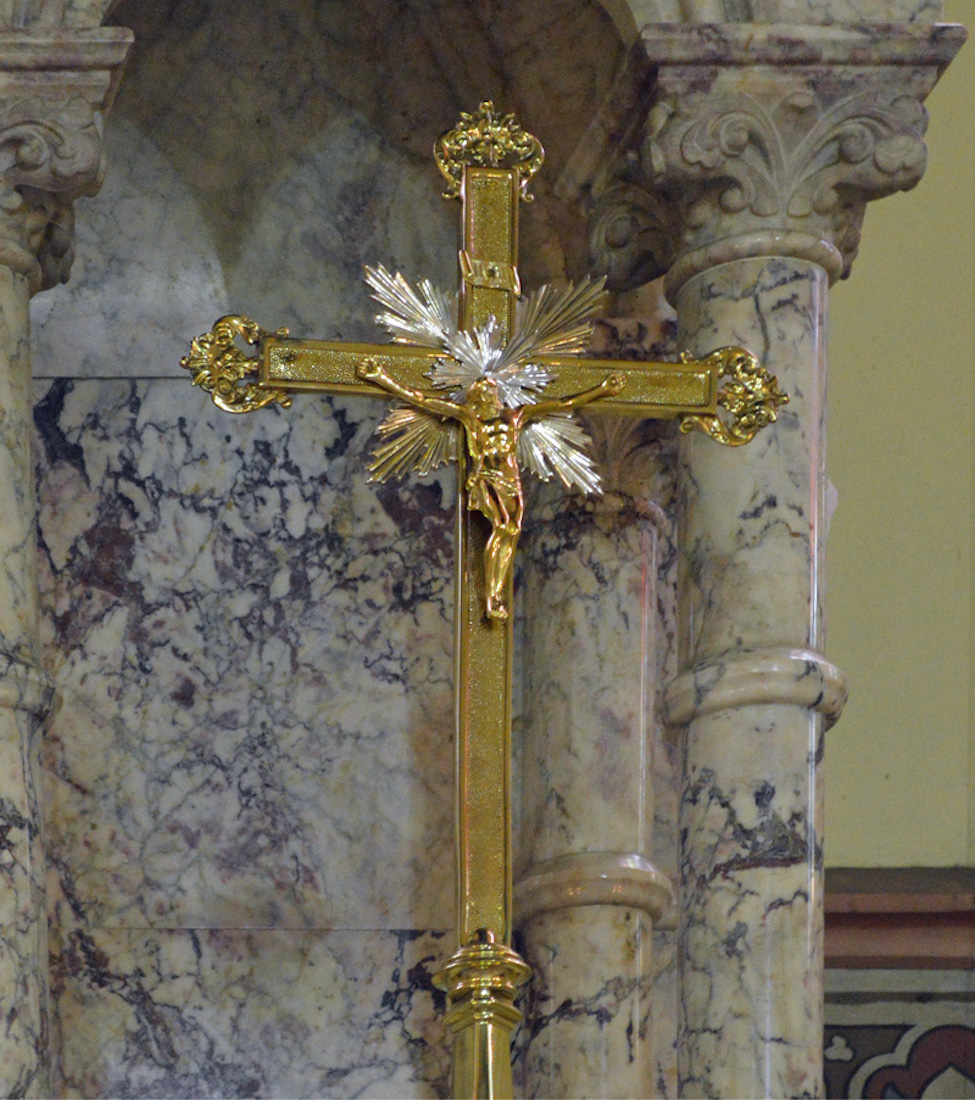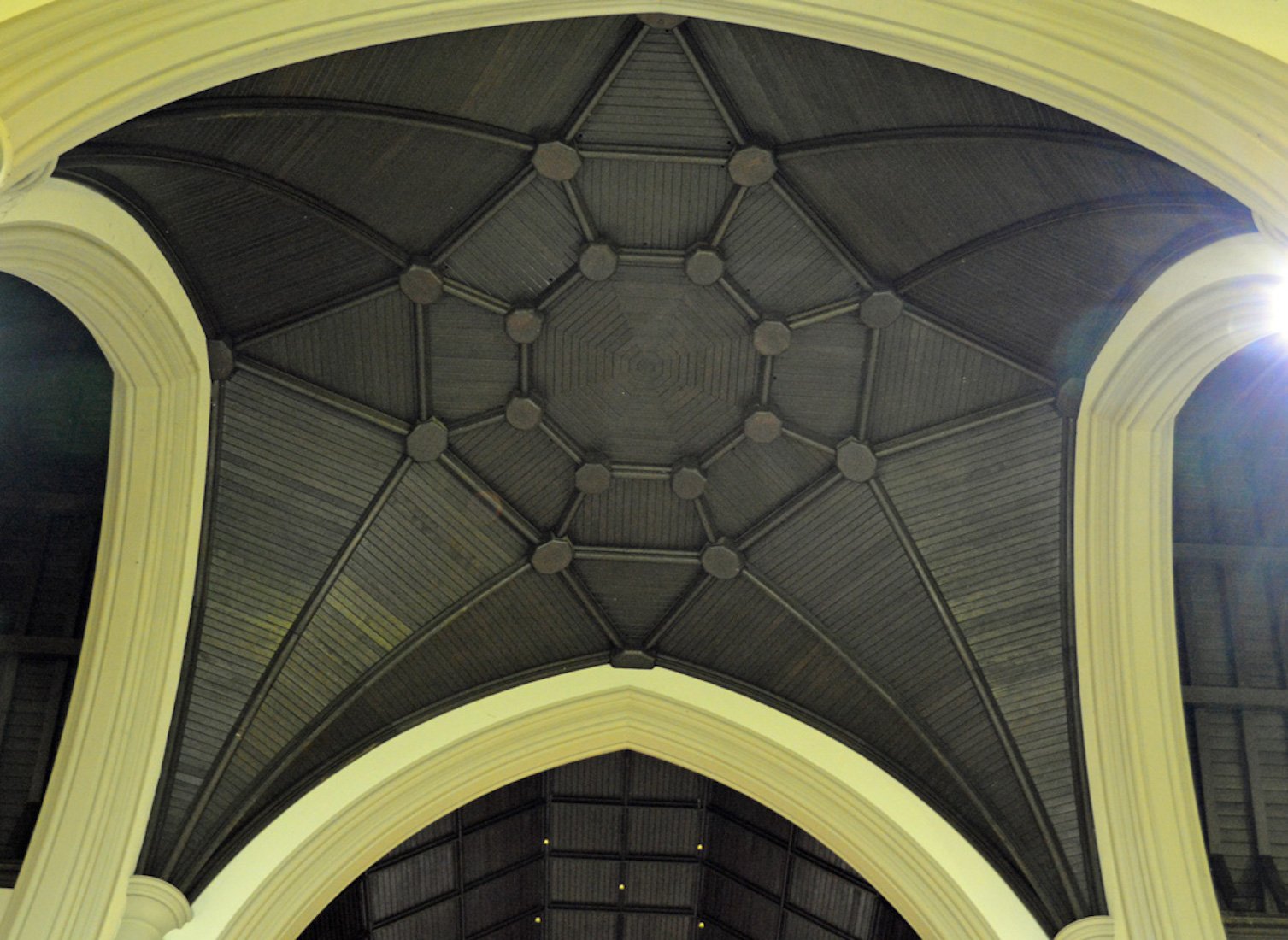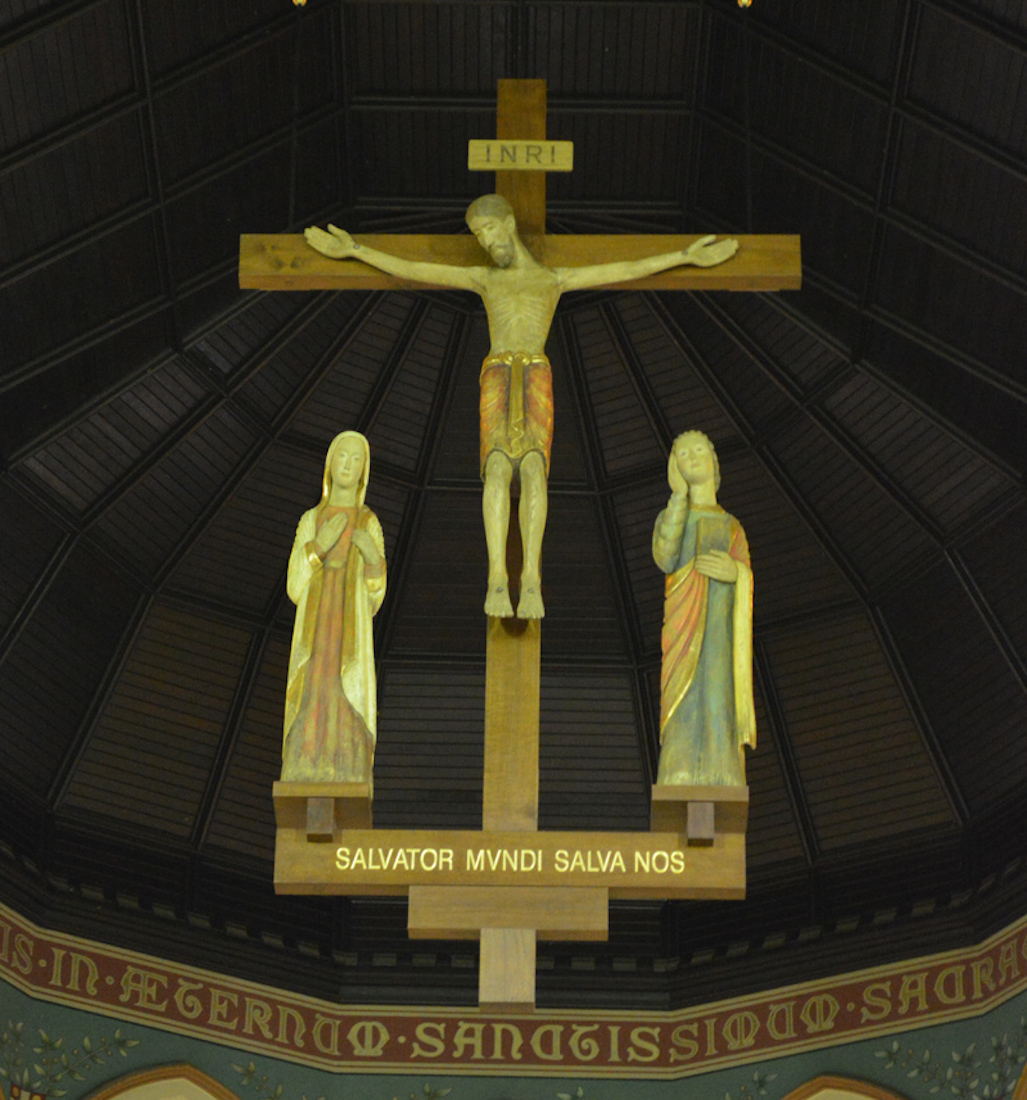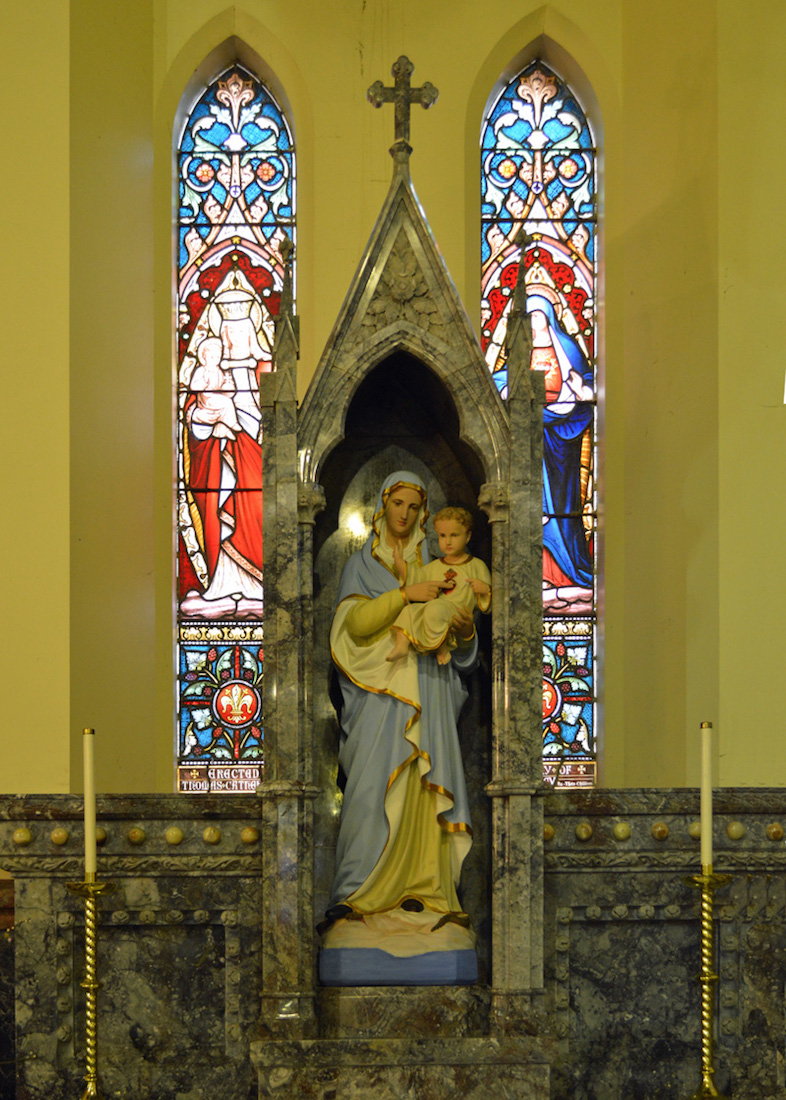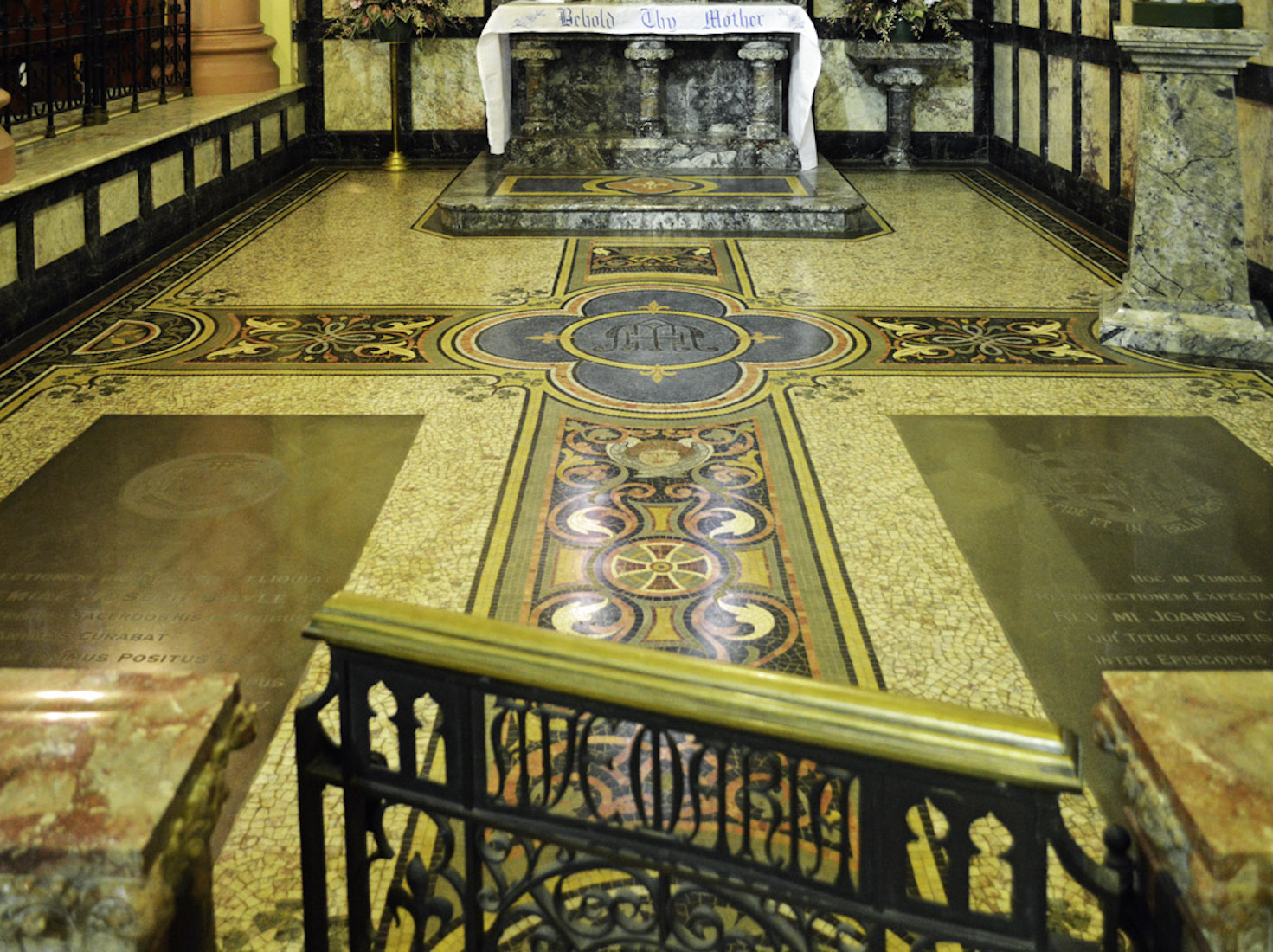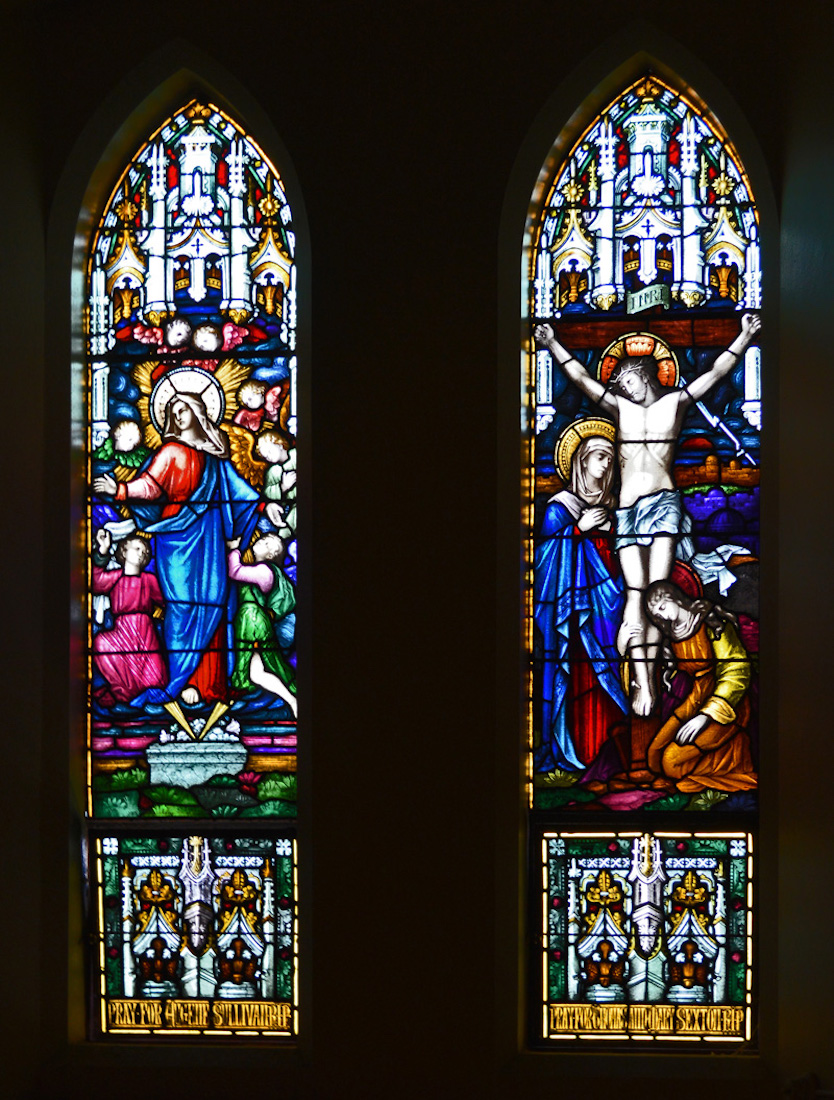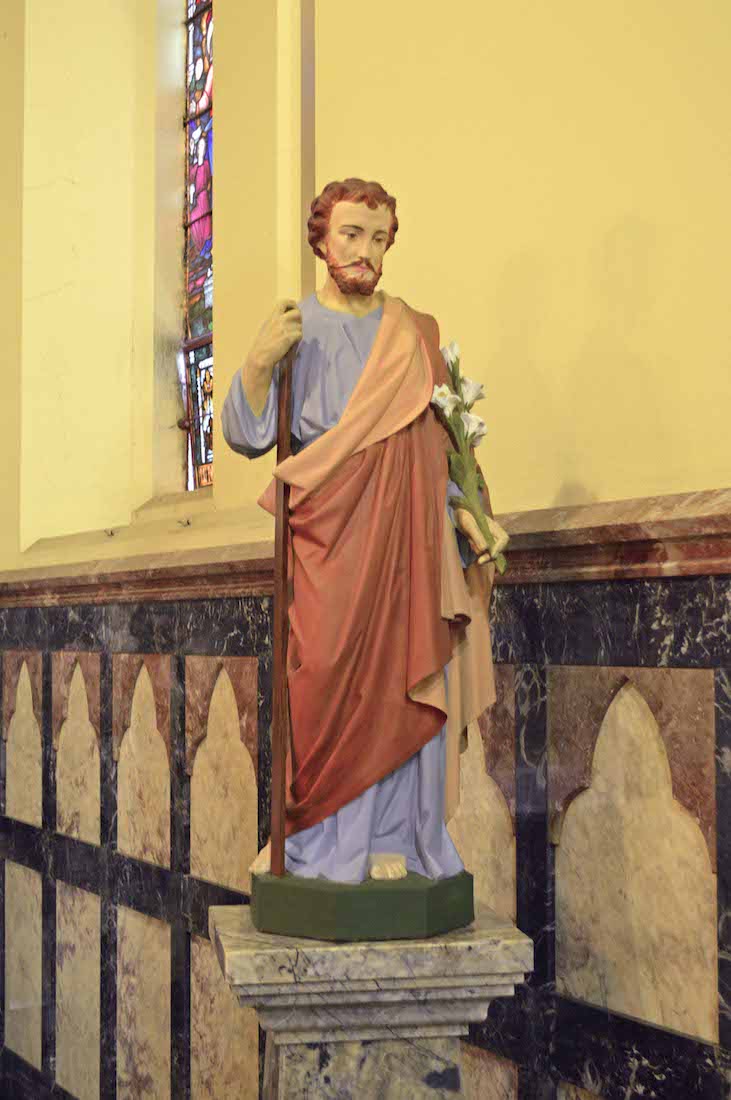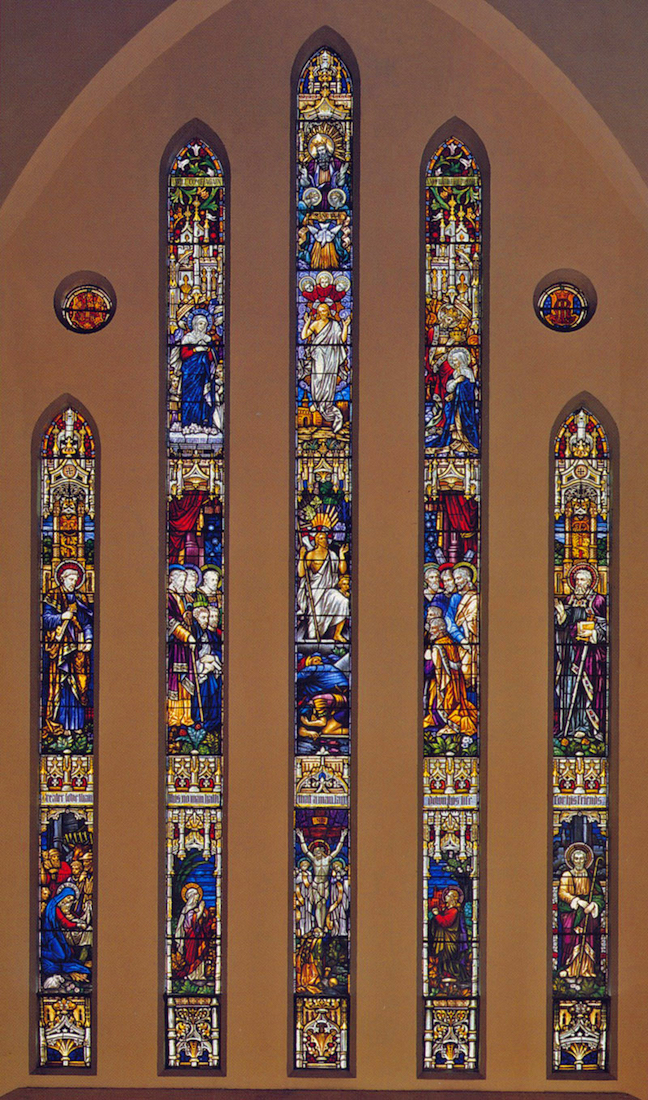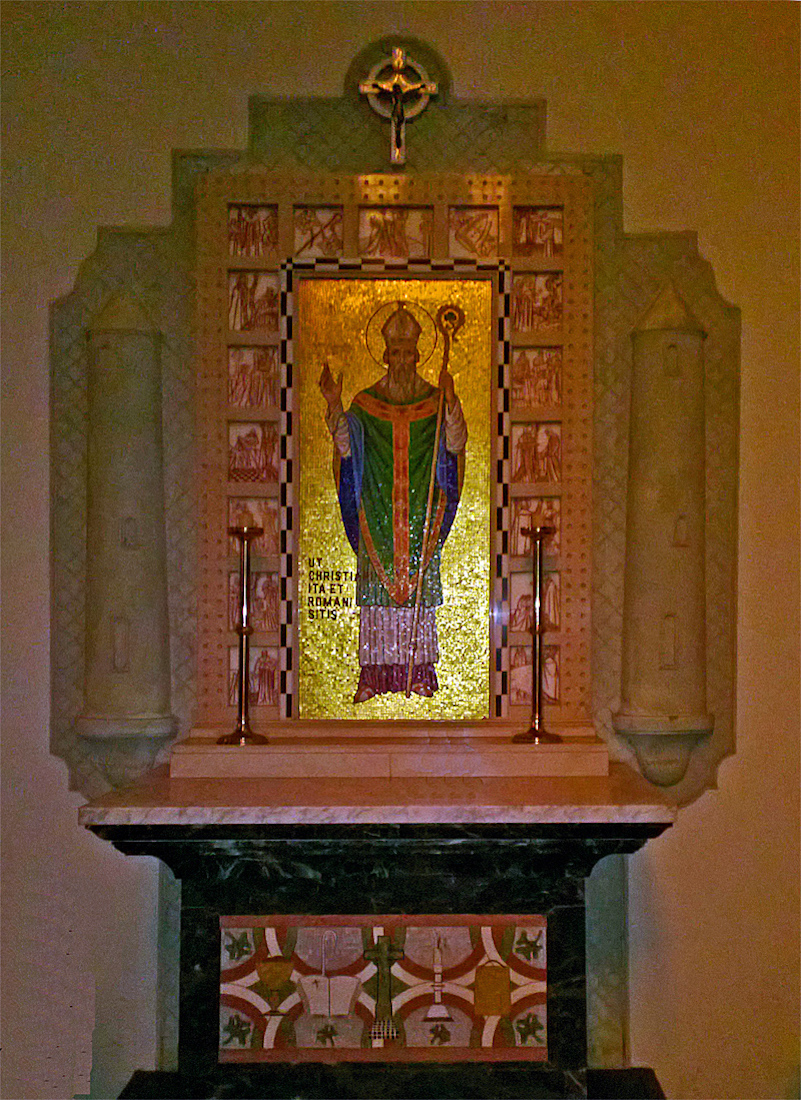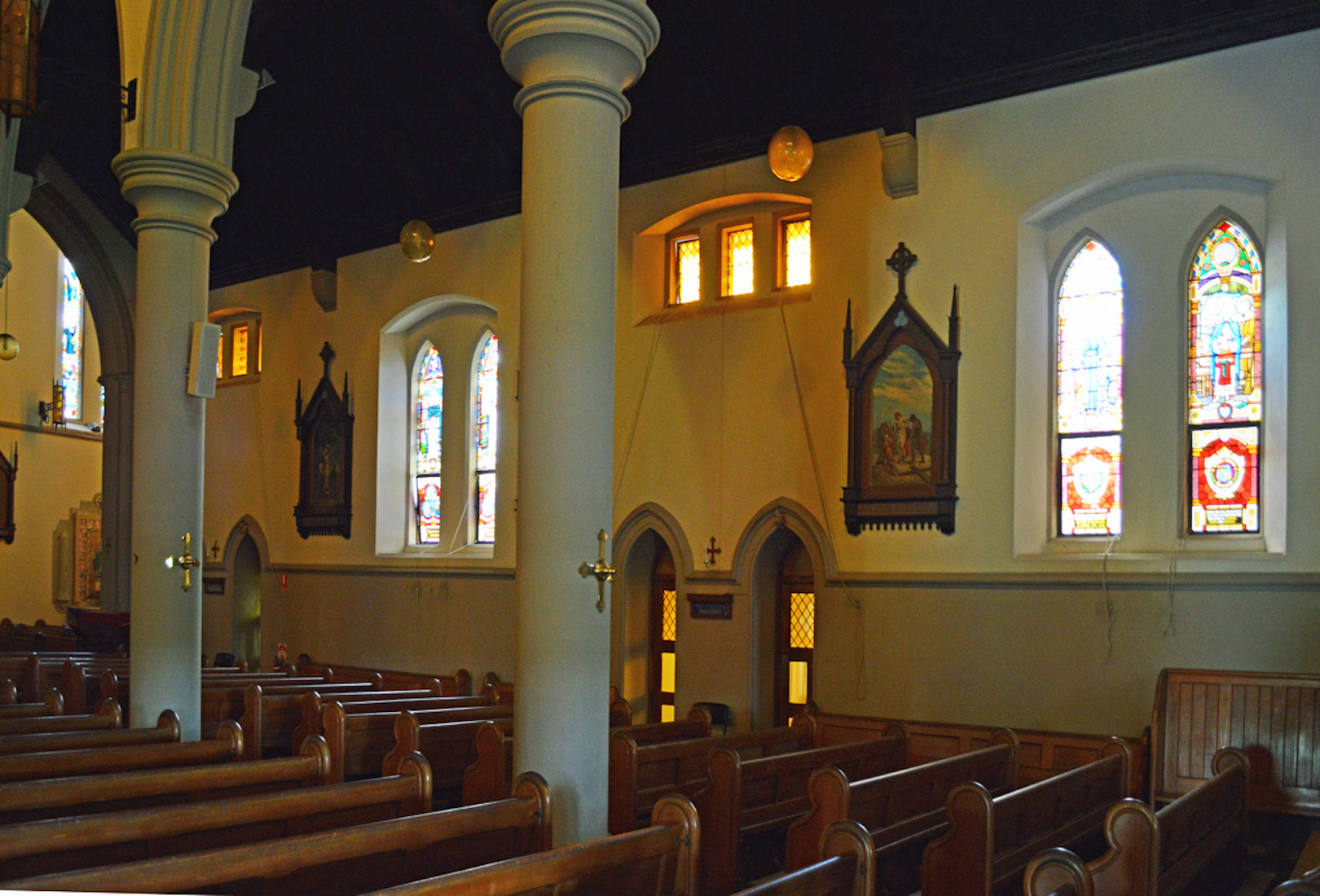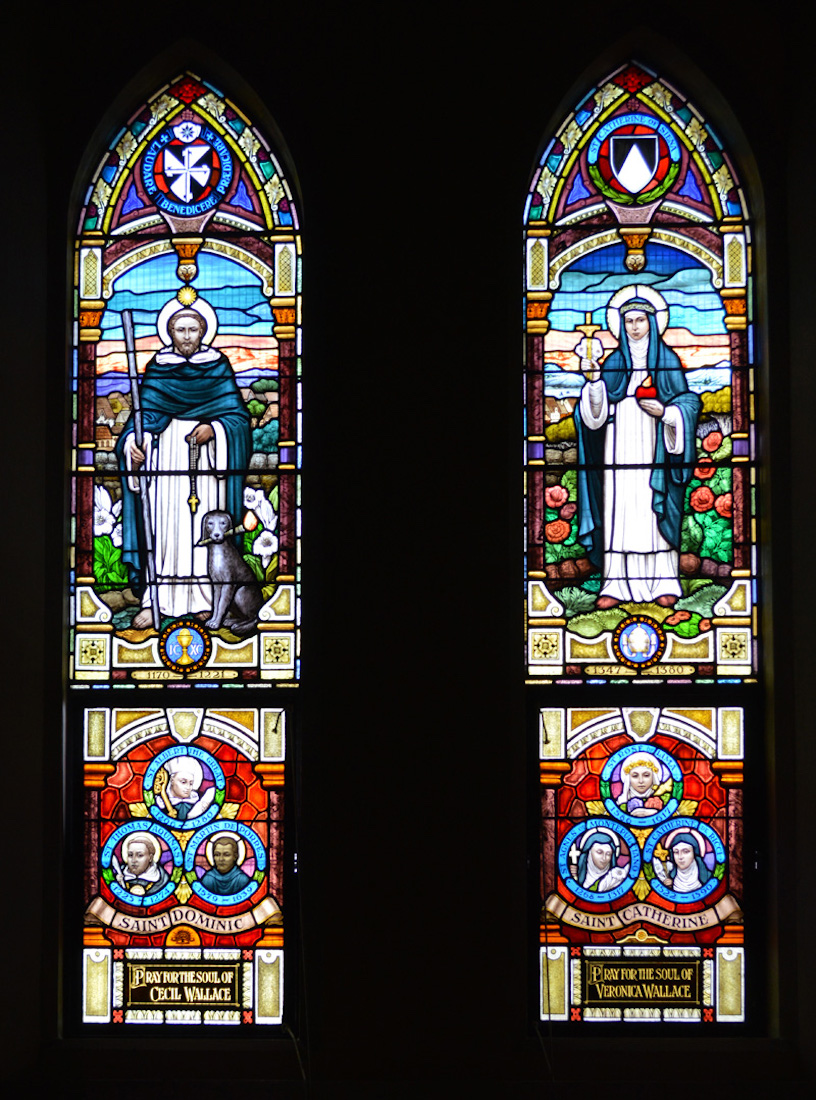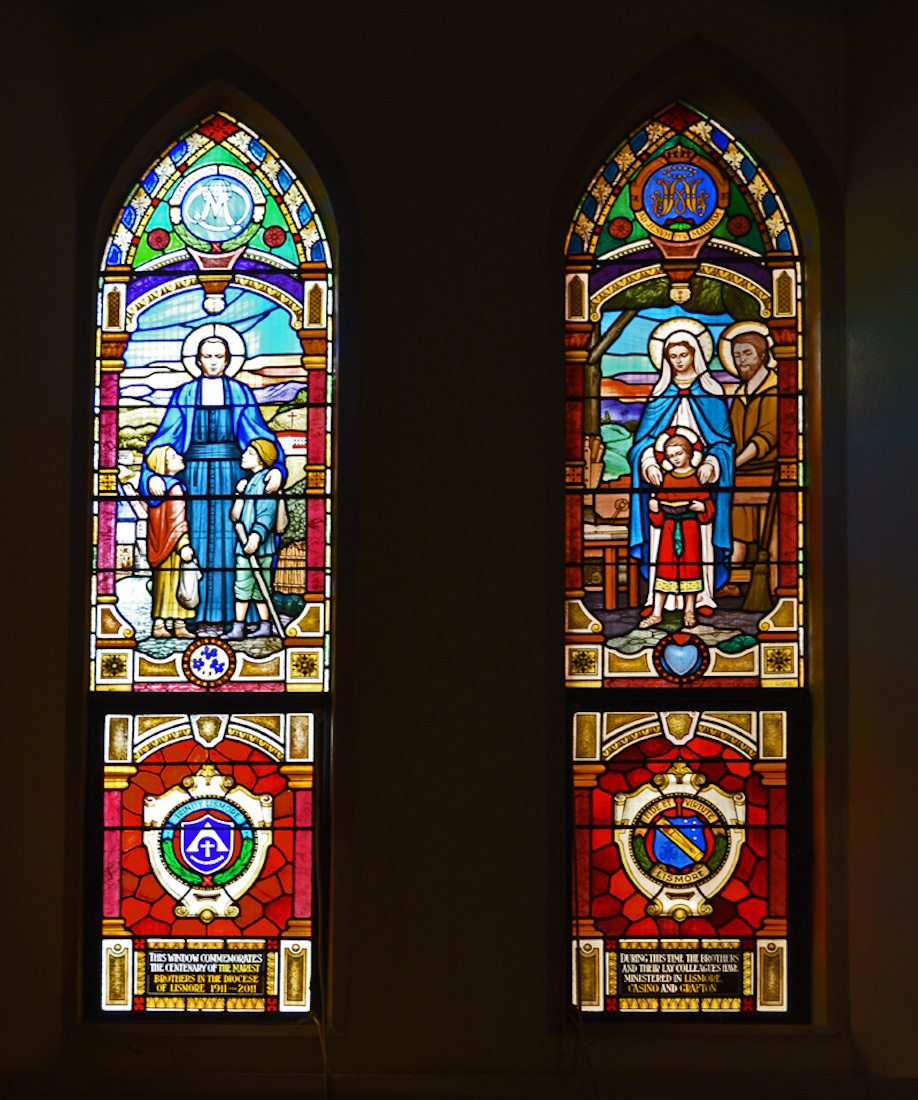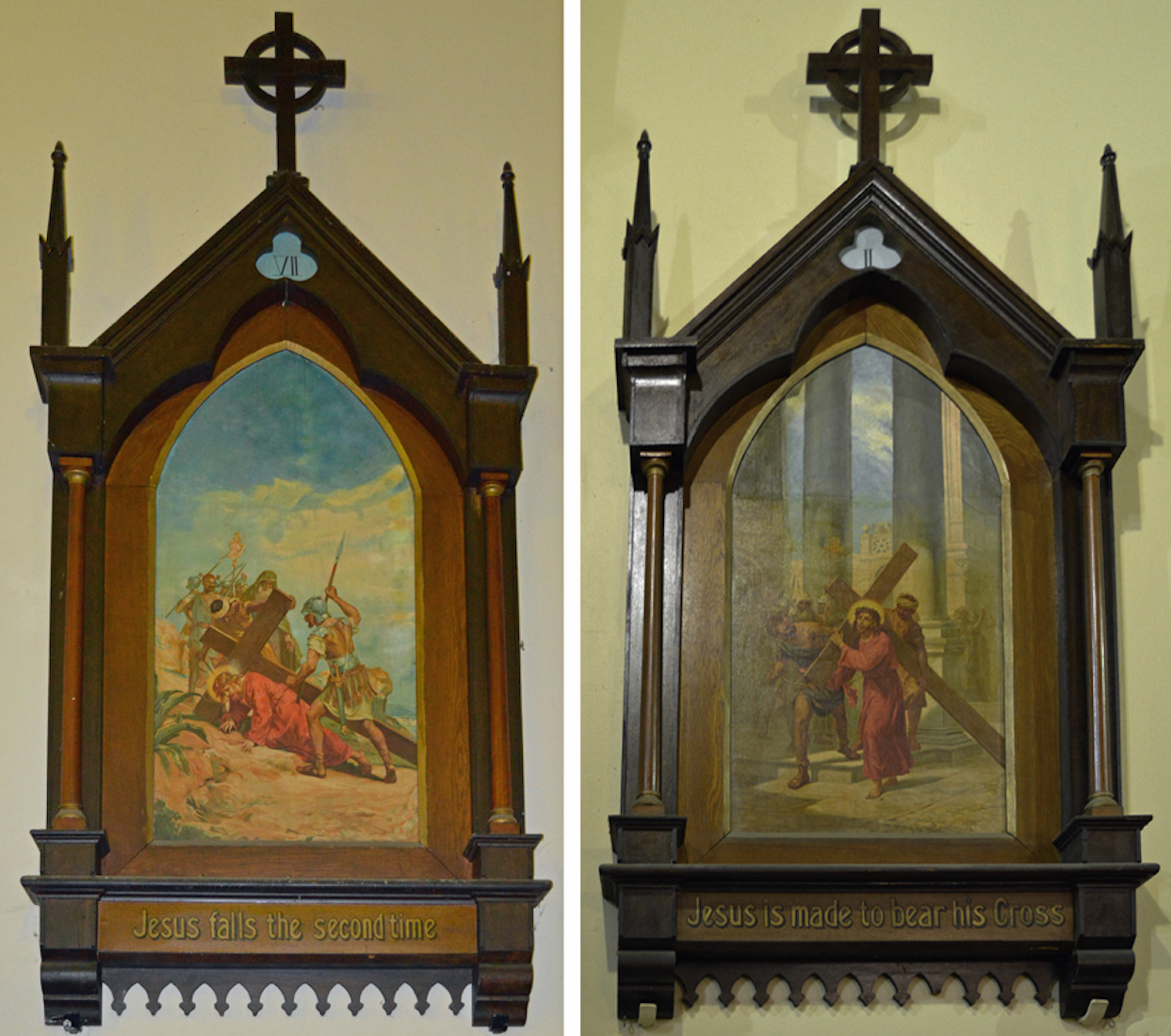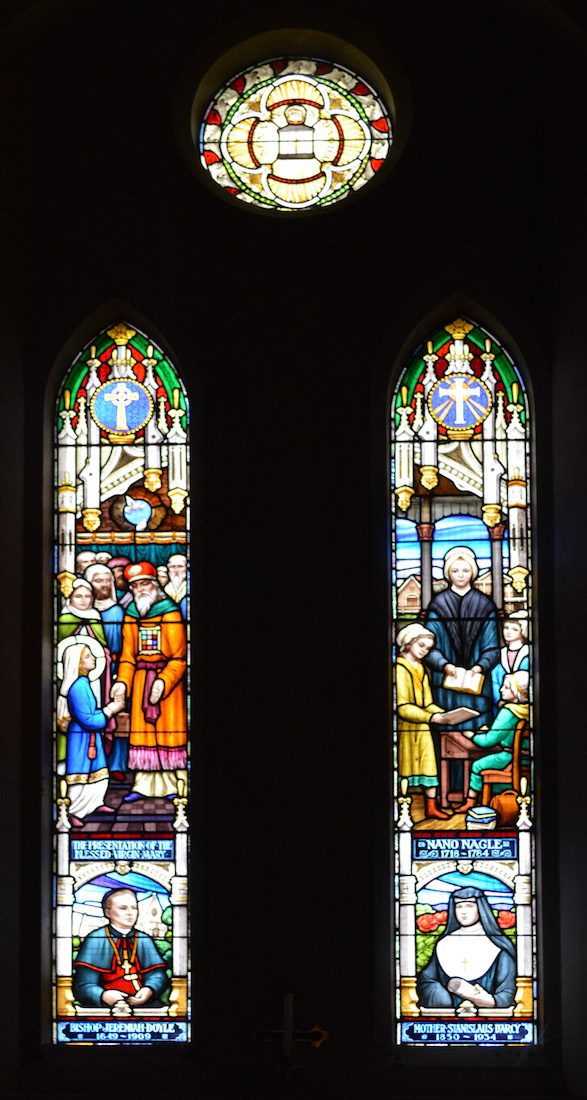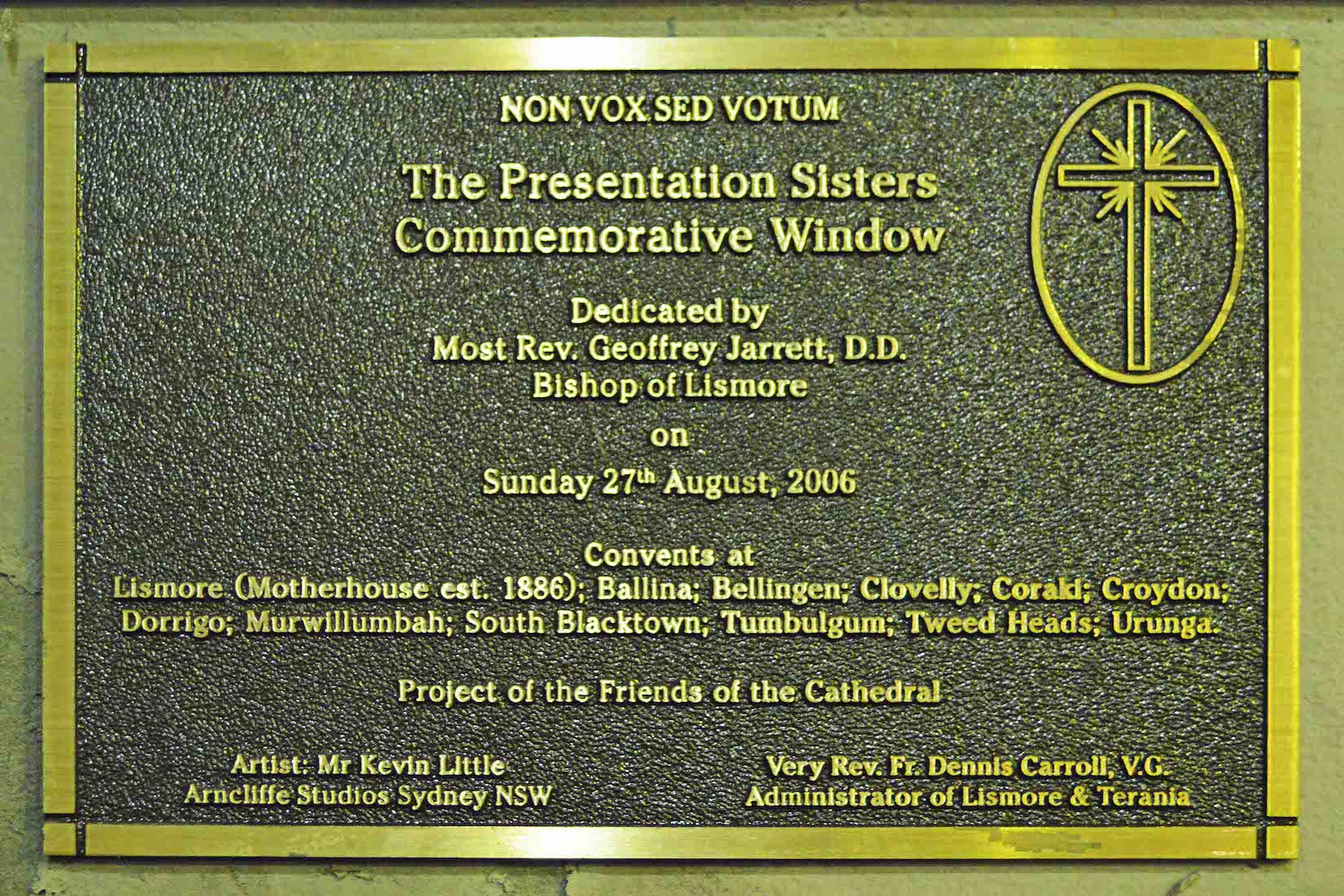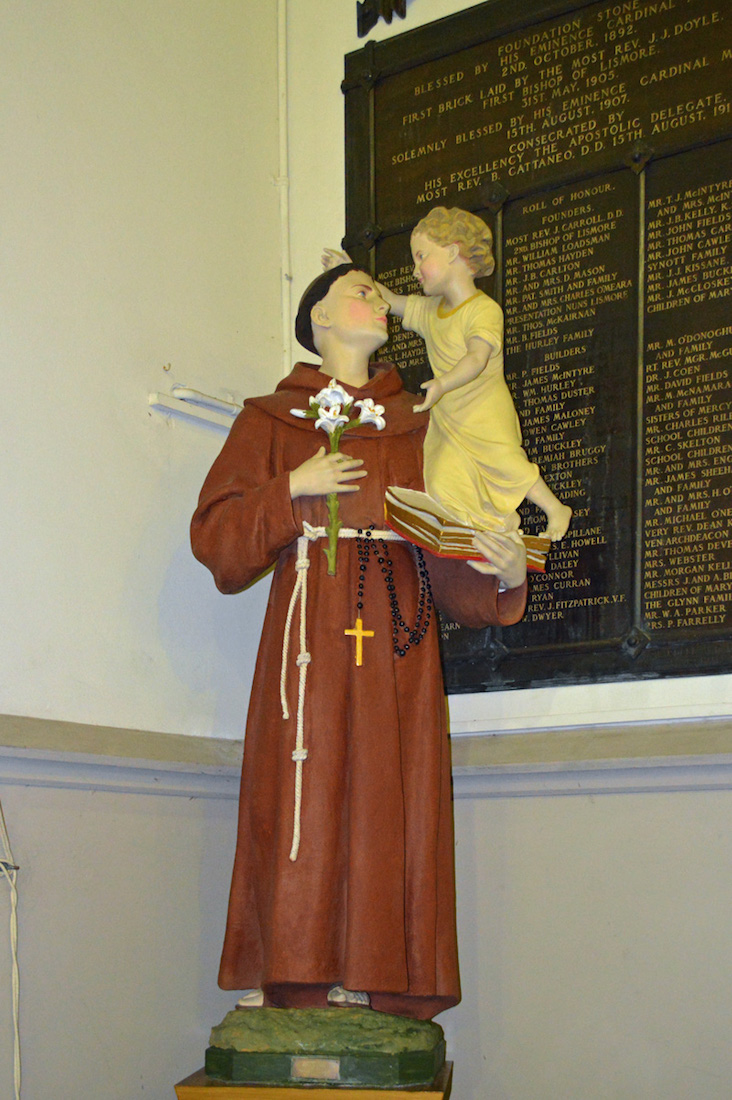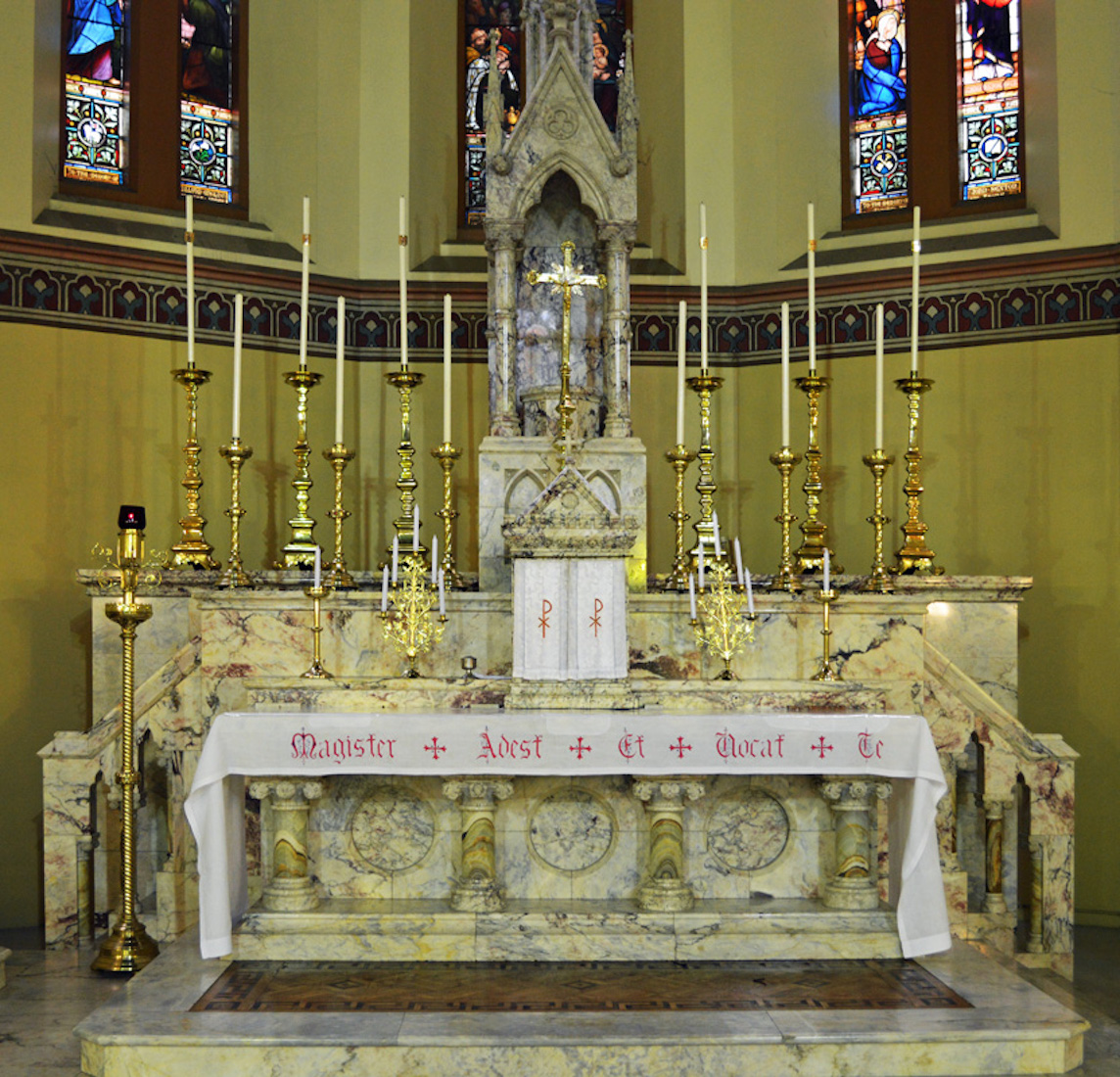
The high altar of white Caleula marble replaced the temporary wooden altar installed in 1907 for the opening of the Cathedral. In keeping with the Gothic design, it attracts attention on entry to the Cathedral. The altar was a gift of Mr T. J. McIntyre, and was consecrated on the occasion of the dedication of the Cathedral in August 1919 by the Apostle Delegate, Archbishop Cattaneo. The words on the cloth are interesting. From Jn 11:28, they translate to: The Teacher is here and calling you. PLAN
42. CANDLESTICK
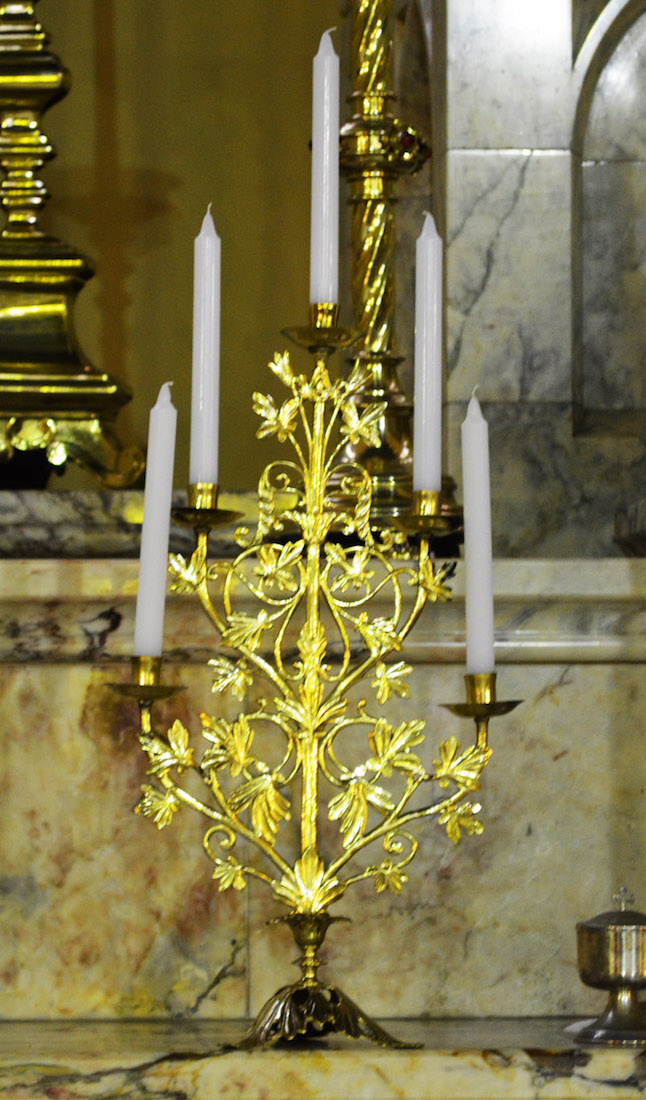
The ornate altar candlesticks are particularly attractive.
43. CROSS
The gold Crucifix on the high altar is unusually creative in its design.
44. APSE ROOF
If we now look upwards we see the dark roof of the forward sanctuary: a design based on a double octagon. This is the conventional crossing where one might expect to find a cathedral lantern or a spire.
45. ROOD CROSS
Here too we find the Rood, beautifully accented by the dark background. The Blessed Virgin and St John the Apostle wait at the foot of the Cross. The inscription reads: SALVATOR MVNDI SALVA NOS or ‘Saviour of the world, save us’.
46. LADY CHAPEL REREDOS
We now leave the sanctuary / Chapel of the Blessed Sacrament, and move across to the Lady Chapel in the South East corner of the Cathedral. The reredos here is made of King Edward marble and features a statue of Mother and Child. The windows behind the altar are partially obscured but appear to have a Marian theme.
47. CHAPEL FLOOR
The floor of the Lady Chapel is elaborately tiled in mosaic, the main design being a large Cross with an ‘M’ motif at the centre. Two large brass plaques in the floor cover the mortal remains of Bishop Doyle and Bishop Carroll.
48. CHAPEL SOUTH EAST WINDOW
There are two pairs of stained glass windows on the South wall of the Lady Chapel. The pair to the East show Mary being comforted by angels, and Mary at the Cross. The left window has the inscription: Pray for Augene Sullivan RIP; and the right window: Pray for Thomas and Mary Sexton RIP.
49. CHAPEL SOUTH WEST WINDOW
The more Western windows on the South wall of the Lady Chapel show a Nativity scene, and the boy Jesus showing a small wooden Cross to his parents. The inscription below the left window reads: Pray for Daniel and Catherine Hogan RIP; and below the right window: In Thanksgiving: Joseph and Claire Coen.
50. ST JOSEPH
Standing a little apart in the Lady Chapel is a statue of St Joseph, distinguishable by the sheaf of lilies he carries. The lilies arise from a legend concerning just who would be the earthly father of Jesus.
51. SOUTH TRANSEPT EAST WINDOW
These windows on the East wall of the South transept have a ministry of healing as a common theme. The scenes in the left window, from top to bottom are St Vincent de Paul, St Louise de Marilac, Mother Mary Aikenhead, and ‘Tarmons’ 1920 (a mental health service in Lismore). Those in the right window are St John of God, St Catherine Labouré, Hospital Ward 1931, and St Vincent’s Hospital.
52. SOUTH TRANSEPT SOUTH WINDOW
Five windows of beautifully executed stained glass give special character to the South transept. They are the story of Christ and His Church.
53. ST PATRICK’S SHRINE
St Patrick is honoured in the South transept. He was declared the Principal Patron of the Diocese in August 1915 by Pope Benedict XV. The shrine was blessed by Bishop Carroll on 20 June 1937. The mosaics tell his story and the legends about him. [Photo Credit: Geoff Costello]
54. SOUTH NAVE
We now leave the South transept to explore the South wall of the Cathedral. As with the North wall there are two sets of windows, Stations of the Cross, and the confessionals. Because of the placing of the tower with its entryway, there is no South door corresponding to the North door.
55. SOUTH NAVE EAST WINDOW
These interesting lancets at the East end of the South nave show St Dominic (1170 – 1221) at left and St Catherine Of Siena (1347 – 1380) at right. Below at left we have three other saints: St Albert the Great 1206–1280; St Thomas Aquinas 1225–1274; St Martin de Dorres 1579–1639. At right we have: St Rose Lima 1566 – 1617; St Agnes of Montepulciano 1268 –1317; St Catherine de Ricci 1522–1590. The bottom inscriptions are: Pray for the soul of Cecil Wallace, and, Pray for the soul of Veronica Wallace (right).
56. SOUTH NAVE WEST WINDOW
The pair of lancets at the West end of the South nave commemorate the centenary of the Marist Brothers in the Diocese of Lismore, 1911 – 2011. During this time, the Brothers and their Lay Colleagues have ministered in Lismore, Casino and Grafton.
57. STATIONS OF CROSS
The 14 Stations of the Cross are displayed along the walls of the nave and transepts. These are older in style, with painted scenes of Jesus and the Crucifixion.
58. WEST WALL, SOUTH WINDOW
We now move to the South window on the West wall – The Presentation Sisters Commemorative Window. In this window the following are depicted: The Presentation of the Blessed Virgin Mary; Bishop Jeremiah Doyle 1849 – 1909, Nano Nagle 1718 – 1784, Mother Stanislaus d’Arcy 1850 – 1934.
59. PLAQUE
On the wall below is a brass plaque saying that this window was dedicated by Most Rev Geoffrey Jarrett, D.D., Bishop of Lismore on Sunday 27th August 2006. There follows a listing of convents: Lismore (Motherhouse est 1886); Ballina; Clovelly; Coraki; Croydon; Dorrigo; Murwillumbah; South Blacktown; Tumbulgum; Tweed Heads; Urunga. The artist was Kevin Little.
60. ST ANTHONY
There is perhaps no more loved and admired saint in the Catholic Church than Saint Anthony of Padua, a Doctor of the Church. Though his work was in Italy, he was born in Portugal. He joined the Franciscan Order in 1221, when he was 26 years old. The reason he became a Franciscan was because of the death of the five Franciscan protomartyrs – St. Bernard, St. Peter, St. Otho, St. Accursius, and St. Adjutus – who shed their blood for the Catholic Faith in the year 1220, in Morocco, in North Africa, and whose headless and mutilated bodies had been brought to St. Anthony’s monastery on their way back for burial. St. Anthony became a Franciscan in the hope of shedding his own blood and becoming a martyr. He lived only ten years after joining the Franciscan Order.


